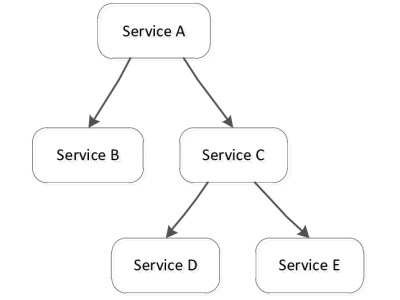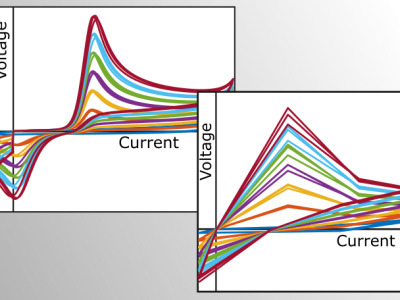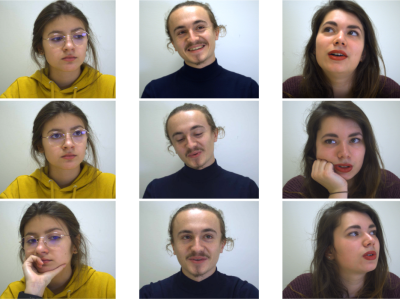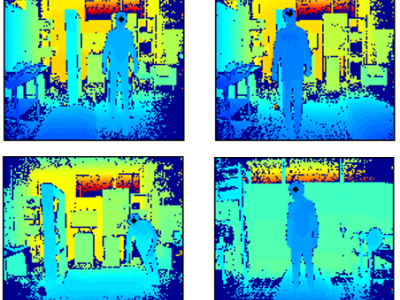Arabic Voice Commands for Smart Homes Dataset

- Citation Author(s):
-
Abdelrahman Salah (Software Engineering & Information Technology Department, Faulty of Engineering & Technology, Egyptian Chinese University )Ghada Adel (Software Engineering & Information Technology Department, Faulty of Engineering & Technology, Egyptian Chinese University )Hussien Mohamed (Software Engineering & Information Technology Department, Faulty of Engineering & Technology, Egyptian Chinese University )Youssef Baghdady (Software Engineering & Information Technology Department, Faulty of Engineering & Technology, Egyptian Chinese University )
- Submitted by:
- Sherin Moussa
- Last updated:
- DOI:
- 10.21227/b6nx-8q20
- Data Format:
 875 views
875 views
- Categories:
- Keywords:
Abstract
This is the First Arabic voice Commands Dataset to provide personalized control of devices at smart homes for elder persons and persons with disabilities. The dataset contains 12 speakers, each saying 36 different phrases or words in Arabic language. The goal of this dataset is to use it in an Arabic smart home system to control home devices through voice. Participants were asked to say each phrase multiple times. The phrases to record were presented in a random order.
Instructions:
This is the First Arabic voice Commands Dataset to provide personalized control of devices at smart homes for elder persons and persons with disabilities. The dataset contains 12 speakers, each saying 36 different phrases or words in Arabic language. The goal of this dataset is to use it in an Arabic smart home system to control home devices through voice. Participants were asked to say each phrase multiple times. The phrases to record were presented in a random order.
# Arabic Commands Dataset (Personal Control of Things Through Voice)
--> Dataset contains 12 speakers, each saying 36 different phrases or words in Arabic language.
--> The goal in preparing this dataset was to use it in an arabic smart home system to control home devices through voice.
Participants were asked to say each phrase multiple times. The phrases to record were presented in a random order.
Participants were required to consent to their speech data being released along with anonymized demographic information about themselves.
// Some of the audios were considered by the participants to be noisy or spoken with different speed variations.
-----------------------------------------------------------------------------------------------------------------------------------------------------------
## CONTENTS
The files are organized into directories that contain the following:
1. **/wavs/speakers/**: Contains directories divided by the generated speaker ID given to each participant.
Each directory contains .wav files containing the speech audio recorded by that speaker.
2. **/data/speaker_demographics.csv**: A CSV file with the demographics for each speaker.
These include: Speaker ID, Speaker Spoken Language, Gender, and Age Range.
3. **/data/train_data.csv**, **/data/valid_data.csv**, **/data/test_data.csv**: A csv file describing each audio file in the training set, validation set,
and test set, respectively. Each line contains the following information:
- *path* - Path to the .wav file
- *speakerId* - Unique numeric code for the speaker of this audio
- *Transcription Translated to English* - The "Arabic command" that the speaker was asked to read translated to English
- *Action* - Depends on the command
- *Object Controlled* - One of 'null', 'Light', 'TV', 'AC'
For more details, please contact:
Sherin M. Moussa, sherinmoussa@cis.asu.edu.eg
Department of Information Systems,
Faculty of Computer and Information Sciences,
Ain Shams University
Abdelrahman Salah, 191800156@ecu.edu.eg
Ghada Adel, 191700001@ecu.edu.eg
Hussien Mohamed, 191700053@ecu.edu.eg
Youssef Baghdady, 191700019@ecu.edu.eg
Software Engineering & Information Technology Department,
Faulty of Engineering & Technology,
Egyptian Chinese University
Dataset Files
- ArabicVoiceDataset_Part1.zip (Size: 51.62 MB)
- Speakers_Part2.zip (Size: 55.62 MB)
- Speakers_Part3.zip (Size: 69.62 MB)
- Speakers_Part4.zip (Size: 49.15 MB)
- Speakers_Part5.zip (Size: 80.79 MB)
- Speakers_Part6.zip (Size: 73.04 MB)
- Speakers_Part7.zip (Size: 79.44 MB)
- Speakers_Part8.zip (Size: 67.44 MB)
- Speakers_Part9.zip (Size: 111.53 MB)















